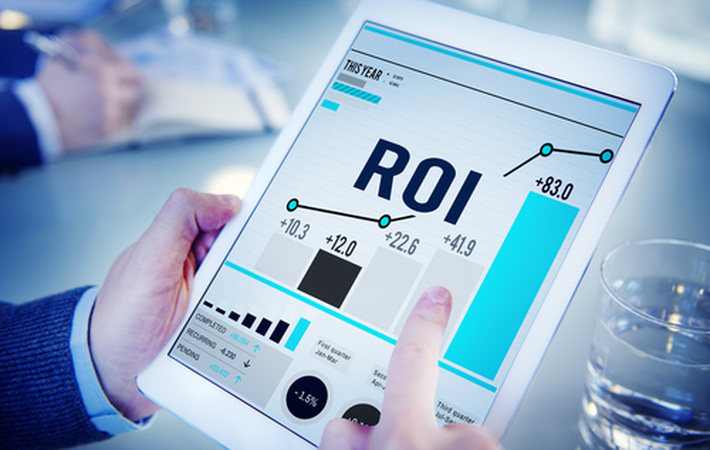
Published on 05/07/2017 | Market Sizing
A fundamental shift is occurring in building controls, driven by a new generation of affordable, powerful Internet of Things (IoT) devices. These networked sensors and controls can be quickly and cost-effectively deployed in commercial buildings and industrial sites to generate large amounts of valuable data for analytics and automation. Building managers benefit from this granular new data and control capability with the ability to fine-tune processes at a greater number of building systems to lower energy and maintenance costs. The resulting savings can provide compelling return on investment (ROI), even for buildings under 100,000 square feet.
Buildings consume 70% of the electricity load in the U.S., and account for 39% of U.S CO2 emissions. According to the Department of Energy, buildings account for 40% of U.S. energy use and waste 30% of the energy used per year. That accounts for a massive amount of the annual energy wasted and excess carbon produced in the U.S., reaching over $100 billion in operational costs per year.
Hundreds of millions of square feet of real estate and millions of remote equipment assets are not monitored or managed at all for energy or operational savings.
Building management systems (BMS) or building automation systems (BAS) are the traditional solution to addressing the problem of energy waste. Companies such as Johnson Controls, Trane and Honeywell make excellent, sophisticated BMS systems tailored for applications in very large buildings. Unfortunately, BMS is traditionally expensive, complex, and requires specialized installation, programming, and maintenance. The average cost to deploy a basic BMS is about $2.30 per square foot, equivalent to $250,000 for a 100,000 square foot building. This cost means low ROI is a challenge, which limits most BMS deployments to the major subsystems, such as HVAC and lighting in high-traffic areas, and of only the largest buildings, over 100,000 square feet. This captures only a portion of potential efficiencies.
Unfortunately, because of cost and complexity BMS is rarely deployed into buildings under 100,000 square feet, which constitute about 90% of the total building stock in the U.S. Even in the 10% of larger buildings, BMS often isn’t used in low-traffic areas such as warehouses, stockrooms, or garages, or to distributed equipment such as pumps, generators, or parking lot lights on campuses and industrial sites. Hundreds of millions of square feet of real estate and millions of remote equipment assets are not monitored or managed at all for energy or operational savings.
So what about all the energy being wasted in the other 90% of buildings? Solutions are now arriving in the form of IoT-generation connected devices. Advancements in sensor and controls technology now enable a new wave of advanced, non-invasive, cost-effective, and quick-to-install products. Because properly-deployed and connected IoT products can overcome the capital barriers of installing traditional BMS, a vanguard application for these devices is for energy management in buildings and remote equipment. For the first time, these new products can be cost-effectively deployed by non-specialized personnel and extend the reach of existing BMS systems, or even begin to replace BMS in mainstream applications in under-100,000 square foot buildings. The “big data” these new IoT devices generate can be gathered into cloud-based management and analytics services via existing networks, and the devices can be easily monitored and controlled by facilities managers via smartphones and tablets.
Focusing on HVAC, lighting, and some types of electrical loads, it is reasonable to expect savings in the range of 10% to 25% when implementing proactive energy management programs in mid-sized buildings.
Adding IoT-based controls and monitoring to a building can cost from just $5,000 to $50,000, which is a fraction of traditional BMS costs. The process typically requires a systems integrator or in-house electrician and IT network professional. An energy engineering specialist is recommended to analyze the data and make recommendations on process optimization and automation in order to maximize savings.
Focusing on HVAC, lighting, and some types of electrical loads, it is reasonable to expect savings in the range of 10% to 25% when implementing proactive energy management programs in mid-sized buildings. For a typical 75,000 square foot building, this equates to an annual potential savings of $15,000 to $50,000 per year. Some buildings can save over $100,000 annually, and ROI can occur in six months to two years. Beyond the pure monetary savings, additional benefits related to sustainability and environmental stewardship can also be realized, with detailed data to support them.
Perhaps the biggest challenge to providing cost-effective, high-ROI energy management to mid-sized buildings has been the lack of interoperability between devices. The interoperability problem is compounded by the need to interconnect both legacy equipment in the buildings (such as roof-top chillers, electric meters and lighting control panels) with next-generation “over the top” (OTT) devices such as sensors and switches. There are dozens of protocol standards and literally hundreds of different implementations just among the best-in-class of these devices, and it’s not uncommon to find 5, 10 or more incompatible communications protocols at a single building or campus.
CANDI solves the interoperability challenge by translating communications bi-directionally between the devices themselves and the cloud-based services that analyze and act on the data. CANDI technology is quick and easy to install, and operates at a very low cost. This enables a new wave of smart building benefits for the mainstream market such as reducing energy waste and cost, and delivers a compelling ROI to owners, operators, systems integrators and service providers.
You can find the original article here